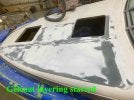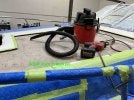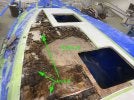B Morton
New Member
- Jan 28, 2021
- 2
- Boat Info
- 1998 270 Sundancer SE
- Engines
- 454 Mercruiser with bravo III drive
Starting batteries provide a lot of cranking amps for the heavy draw from a motor, but once the motor is running, that demand drops out. Using a refrigerator while under way isnt a problem at all. I wouldnt recommend relying on a starter battery for usage while anchored and expecting it to keep you running for 24 hours long, but its more than enough for a few hours. Your best bet is to keep your battery switch to your starter battery while starting and underway, and feel free to use any of your DC devices while you're running, but once you stop, switch over to your house batteries and use them for all your DC
Thanks Sicktght311, that’s how I will run it from now on!!









